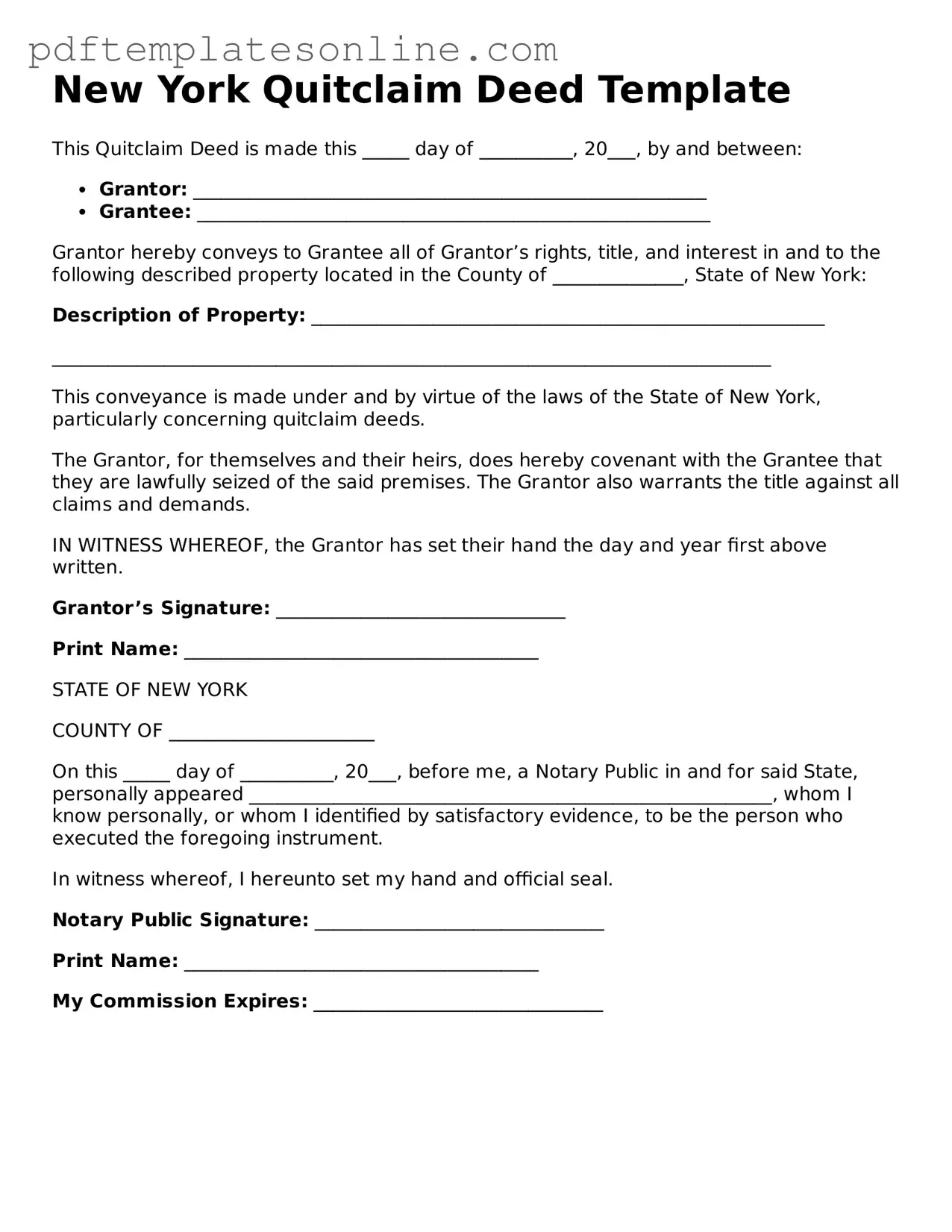Official New York Quitclaim Deed Document
A Quitclaim Deed is a legal document used to transfer ownership of property from one person to another without guaranteeing the property's title. This form is often used in situations where the seller may not have a clear title or when the transfer is between family members or friends. Understanding the Quitclaim Deed process in New York can help individuals navigate property transfers more effectively.
Access Quitclaim Deed Editor Now
